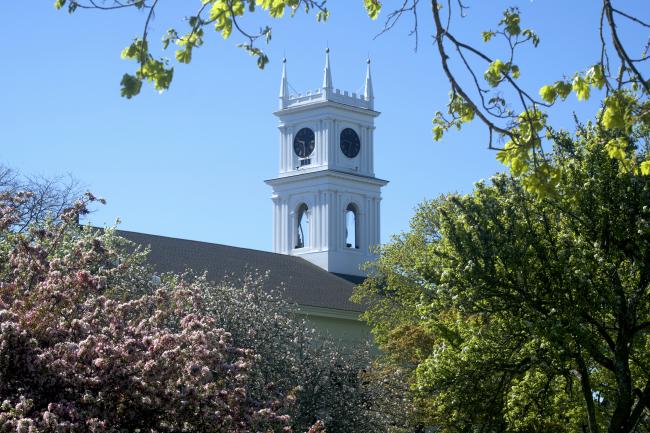It began with a gift some 17 years ago, a donation of money and at once an act of philanthropy and preservation.
The 1975 gift from Fairleigh S. Dickinson Jr. rescued and restored the historic Dr. Daniel Fisher house on Main street in Edgartown. It was also the beginning of the Martha’s Vineyard Historical Preservation Society.
Today the preservation society owns several properties throughout the Vineyard, including the Old Whaling Church in Edgartown, the Old Schoolhouse Museum in Vineyard Haven and the Flying Horses Carousel in Oak Bluffs. It owns some 80 per cent of the stock in the North Water Street Corporation. It sponsors well-known annual events including Taste of the Vineyard and the Empire Brass Quintet. And even though it is prominent among charitable organizations on the Vineyard, the mission of the preservation society is not widely understood. Some think at times its presence is too quiet, too passive. Often it is confused with the Dukes County Historical Society.
But no more.
The Martha’s Vineyard Historical Preservation Society is at a juncture, an important and critical point of change which includes a new director, a new name and a strongly redefined mission.
“It has become apparent we need to chart a strong and different course for our future,” wrote the planning committee in a recent special report to the society trustees.
Among other things, the report recommends changing the name of the society and sets a crisp list of priorities for the organization. “The report was enthusiastically endorsed by the trustees,” said Carole M. Berger, president of the preservation society, this week. Mrs. Berger and trustee Ted Farrow spoke with the Gazette about the society’s desire to strike out in a new direction and to shed some of its old image and old ways of thinking.
Already it has begun.
The preservation society announced this week that it has named a new executive director to succeed Jane Chittick, who left the organization in August. Christopher Scott, a resident of Boston and a longtime seasonal resident of the Vineyard, will take over as the new director on Dec. 1. Mr. Scott has a strong planning background plus 20 years of experience in historic preservation, architectural conservation and helping direct nonprofit organizations. He was the founding director of the Massachusetts Office for Historic Landscape Preservation, and for the past two years has directed a coalition of leading civic groups in New York city.
Soon too the society will have a new name. Pending a formal vote by the trustees and bylaw amendments, the name will be changed to the Martha’s Vineyard Preservation Trust.
And perhaps most important, the society is in the process of reshaping its mission. “Many of the board members feel strong that we have fallen into a maintenance atmosphere,” said Mrs. Berger. The report of the planning committee underscores her remarks. The committee wrote: “At the present time less than 15 cents of every dollar given to us is directed to our founding purpose: to generate and maintain a progressive preservation program on Martha’s Vineyard. The remainder is spent on administrative overhead including salaries, utilities and insurance. We must do better.” The society has an annual operating budget of about $250,000.
Long-range goals recommended by the planning committee include a survey of architecturally significant and historic Vineyard properties, having an active acquisition project on deck at all times and recognizing others for their role in preservation. Eventual plans call for liquidating the North Water Street Corporation and selling the properties (historic buildings used for commercial and retail business). “We need to reinvest and broaden our program,” said Mr. Farrow.
Plans also call for redesigning the park and grounds adjoining the Old Whaling Church and Fisher house, to make them more inviting and accessible for activities such as outdoor concerts and theatre.
Mr. Farrow hopes to see the society acquire a stronger Island-wide image. And Mrs. Berger said she wants to see the society be more of a leader in developing the role of the Old Whaling Church as a performing arts center. She said: “We have booked a lot of events for the Whaling Church. But it has become a sort of ‘rent-it-for-the-night’ place. I think where we fell short was in not sponsoring more events ourselves. We should assume some sort of leadership by sponsorship, and I think we need to begin to reach out in a different way.”
One way to do this, she said, is through educational programs for children.
But Mrs. Berger said the real key to a new image for the preservation society lies in redefining preservation. She said: “Preservation means architectural heritage. But preservation must be tied to use. It’s not enough just to paint it and preserve it and look at it. It’s how these places fit into this century and where we are now.”
Mr. Farrow added: “When I think about what was important to me as a child on this Island I always remember what other people told me was important, like the Gay Head Light....If we do the proper job of preserving, we are saving a structure with a history that will have a new use for people for whom the history is not immediately important. You pass it from generation to generation through use.”











Comments